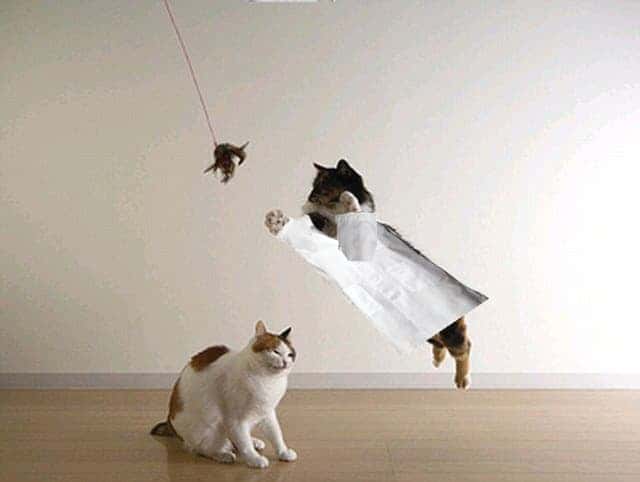It’s been a hard day. Your boss is being especially bossy today. You have so many emails to send that you’re afraid your keyboard will break from all the typing.
Or your final paper is due in 4 hours and Wikipedia doesn’t have anything helpful on the subject you’re writing about. And you’ve been gathering up the courage to ask your cute crush living next door in your dorm out for drinks, and somehow he/she said yes. But now your palms are getting sweaty, thinking about all the ways you can mess it up and get rejected.
You’re tired, you’re stressed, and the pressure keeps mounting on your shoulders. What to do, what to do?
Work hard, says your boss. Study hard, your parents advise you. Just kiss already, your friends yell out. Watch cat videos, says science.
A study conducted by assistant professor Jessica Gall Myrick, surveyed almost 7,000 people about their viewing of cat videos and how it affects their moods, to try and find out why so many of us enjoy seeing the furry little pets on video.
“Some people may think watching online cat videos isn’t a serious enough topic for academic research, but the fact is that it’s one of the most popular uses of the Internet today,” Myrick said. “If we want to better understand the effects the Internet may have on us as individuals and on society, then researchers can’t ignore Internet cats anymore.”
Internet data show there were more than 2 million cat videos posted on YouTube in 2014, gathering almost 26 billion views. Cat videos had more views per video than any other category of YouTube content. The study found that the most popular sites for viewing cat videos were Facebook, YouTube, Buzzfeed and I Can Has Cheezburger.
“We all have watched a cat video online, but there is really little empirical work done on why so many of us do this, or what effects it might have on us,” added Myrick, who owns a pug but no cats. “As a media researcher and online cat video viewer, I felt compelled to gather some data about this pop culture phenomenon.”
Myrick hoped to explore a few possibilities: Does viewing cat videos online have the same kind of positive impact as pet therapy? Do some viewers actually feel worse after watching cat videos because they feel guilty for putting off tasks they need to tackle?
Participants in the study reported that:
- They were more energetic and felt more positive after watching cat-related online media than before.
- They had fewer negative emotions, such as anxiety, annoyance and sadness, after watching cat-related online media than before.
- They often view Internet cats at work or during studying.
- The pleasure they got from watching cat videos outweighed any guilt they felt about procrastinating.
- Cat owners and people with certain personality traits, such as agreeableness and shyness, were more likely to watch cat videos.
- About 25 percent of the cat videos they watched were ones they sought out; the rest were ones they happened upon.
- They were familiar with many so-called “celebrity cats,” such as Nala Cat and Henri, Le Chat Noir.
Of the participants in the study, about 36 percent described themselves as a “cat person,” while about 60 percent said they liked both cats and dogs. Overall, their response to watching the videos was positive. And it seems to Myrick that what is usually seen as just entertainment may have positive impact on work efficiency:
“Even if they are watching cat videos on YouTube to procrastinate or while they should be working, the emotional pay-off may actually help people take on tough tasks afterward,” he said.
She added that the study paves the way for future research into how cat videos can be used in a manner similar to pet-therapy.










